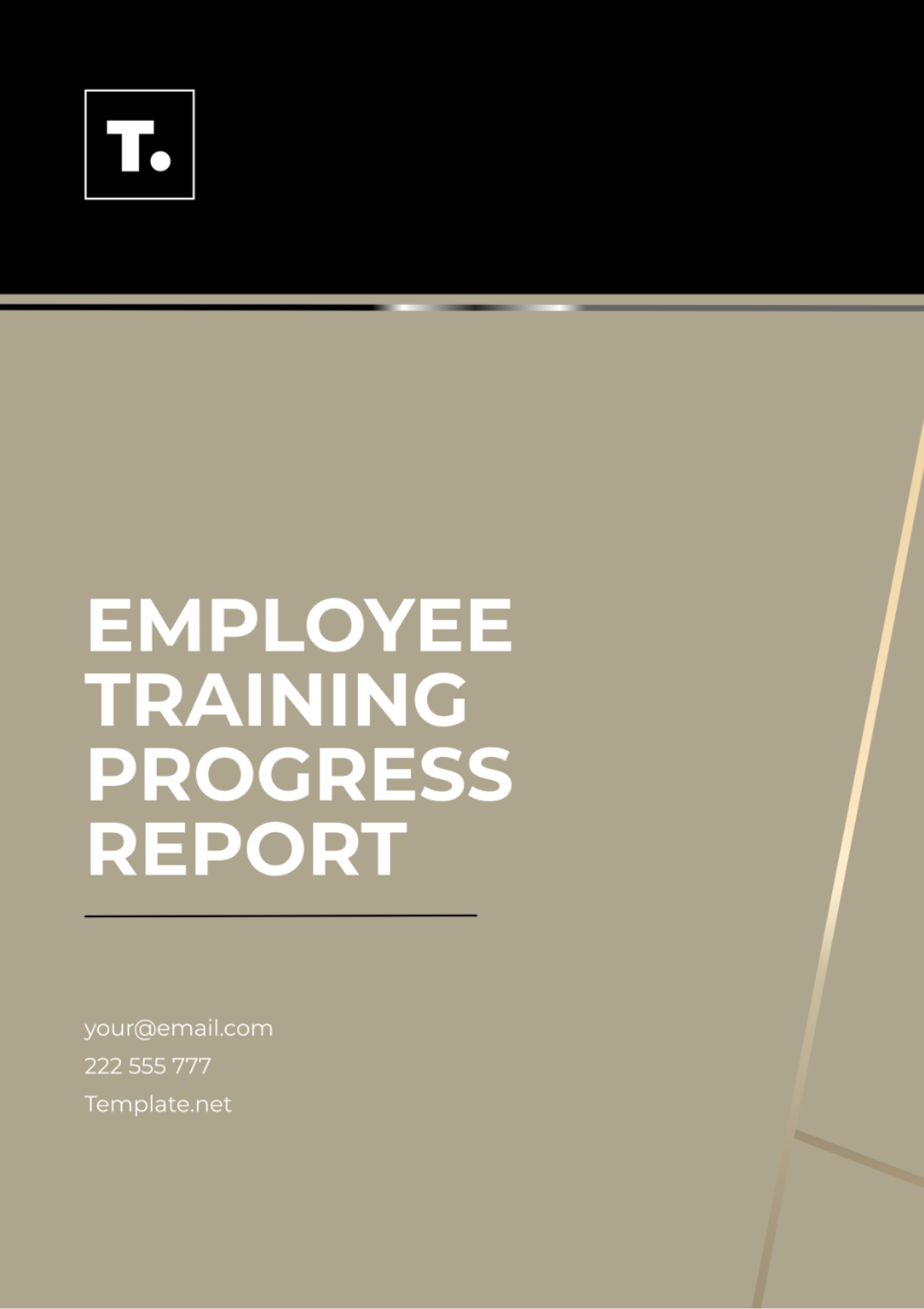Free Employee Training Progress Report

Prepared by: [YOUR NAME]
Company: [YOUR COMPANY NAME]
Department: [YOUR DEPARTMENT]
Date: [CURRENT DATE]
I. Introduction
In today's dynamic business landscape, effective resource allocation is crucial for ensuring the success of employee training programs. This report aims to provide an overview of the [YOUR COMPANY NAME]'s approach to optimizing resource allocation in training initiatives. By identifying training needs and allocating resources accordingly, [YOUR COMPANY NAME] can enhance employee development and drive organizational growth.
II. Training Needs Assessment
A. Current Training Landscape
[YOUR COMPANY NAME] offers a diverse range of training programs to its employees, spanning technical skills, soft skills, compliance training, and leadership development.
A comprehensive analysis of employee performance data and feedback surveys reveals the effectiveness of existing training initiatives and areas for improvement.
B. Identifying Training Needs
Conducting regular performance evaluations and skill gap assessments to identify specific training needs among employees.
Collaborating with department managers and team leaders to understand departmental goals and skill requirements.
Analyzing industry trends and technological advancements to anticipate future training needs and stay ahead of the curve.
III. Resource Allocation Strategy
A. Training Budget Allocation
[YOUR COMPANY NAME] allocates a dedicated budget for training and development activities, ensuring sufficient resources are available to support employee growth.
Prioritizing training initiatives based on their alignment with organizational objectives and expected return on investment (ROI).
B. Allocation of Training Facilities and Materials
Securing appropriate training venues equipped with necessary facilities and technology to facilitate effective learning experiences.
Procuring training materials, such as textbooks, online courses, and software licenses, to support various training programs.
C. Staffing and Trainer Allocation
Assigning qualified trainers or subject matter experts (SMEs) to deliver training sessions based on their expertise and the specific needs of participants.
Establishing a rotation schedule to ensure equitable distribution of training responsibilities among available trainers.
IV. Monitoring and Evaluation
A. Progress Tracking
Implementing robust tracking mechanisms to monitor the progress of employees enrolled in training programs.
Utilizing learning management systems (LMS) to capture data on course completion rates, assessment scores, and participant feedback.
B. Evaluation Metrics
Defining key performance indicators (KPIs) to measure the effectiveness of training initiatives, such as employee performance improvements, skill acquisition, and employee engagement levels.
Conducting post-training evaluations to gather insights from participants regarding the quality and relevance of training content.
V. Findings
A. Identified Challenges
Despite adequate budget allocation, some departments lack access to specialized training resources.
Staffing constraints occasionally lead to delays in scheduling training sessions, impacting employee development timelines.
B. Success Factors
High employee engagement levels observed in interactive training programs emphasizing hands-on learning activities.
Positive feedback from participants regarding the relevance and applicability of training content to their job roles.
VI. Recommendations
A. Enhancing Resource Accessibility
Explore partnerships with external training providers to access specialized resources not available internally.
Implement a centralized booking system for training facilities to streamline the scheduling process and minimize conflicts.
B. Staffing Optimization
Invest in training internal staff members to serve as trainers, reducing reliance on external resources and improving training flexibility.
Establish clear communication channels between HR, department managers, and trainers to expedite the scheduling process and minimize delays.
VII. Conclusion
In conclusion, effective resource allocation is essential for maximizing the impact of employee training programs at [YOUR COMPANY NAME]. By identifying training needs, allocating resources strategically, and implementing the recommended enhancements, [YOUR COMPANY NAME] can empower its workforce with the skills and knowledge needed to thrive in today's competitive business environment.
- 100% Customizable, free editor
- Access 1 Million+ Templates, photo’s & graphics
- Download or share as a template
- Click and replace photos, graphics, text, backgrounds
- Resize, crop, AI write & more
- Access advanced editor
Elevate your workforce's potential with Template.net's Employee Training Progress Report Template. This editable and customizable tool simplifies tracking employee development seamlessly. Harness its power to monitor progress effectively, tailored to your company's needs. Crafted for convenience, it's easily editable in our AI Editor Tool, ensuring adaptability and efficiency.
You may also like
- Employee Letter
- Employee ID Card
- Employee Checklist
- Employee Certificate
- Employee Report
- Employee Training Checklist
- Employee Agreement
- Employee Contract
- Employee Training Plan
- Employee Incident Report
- Employee Survey
- Employee of the Month Certificate
- Employee Development Plan
- Employee Action Plan
- Employee Roadmap
- Employee Poster
- Employee Form
- Employee Engagement Survey





























